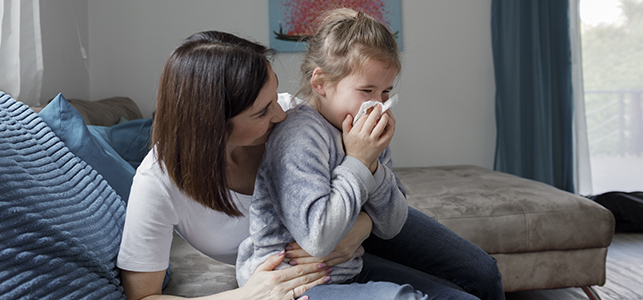
Are your kids struggling with seasonal allergies? They’re not alone. In 2021, studies found that 18.9% of children younger than 18 years of age have seasonal allergies, also known as allergic rhinitis or hay fever.
Seasonal allergies occur at different times of the year and are typically caused by specific pollens:
You may notice your child is experiencing allergy symptoms when airborne irritants, or allergens, enter the eyes, nose and throat, causing the body to release what is called histamine. The release of histamine triggers allergy symptoms, including:
Antihistamines are medications used to treat allergic symptoms by blocking histamine. They’re available as liquids, tablets, nasal sprays and eye drops for both children and adults. Antihistamines can also be found in over-the-counter cold and cough products in combination with decongestants, pain relievers and cough suppressants. Some antihistamines should not be used for children.
It's important to know that there are two main classes of antihistamines that work in different ways and have different side effects.
Older first-generation antihistamines – sedating antihistamines – can cause more drowsiness and fatigue than the newer products. Side effects may include dizziness, poor coordination, dry mouth, nausea and vomiting, blurred vision, and trouble urinating. Occasionally children can become very fussy or irritable instead of drowsy when taking these medicines. Various brands include over-the-counter medications like Benadryl® (diphenhyramine), Chlor-Trimeton® (chlorpheniramine) and Dimetapp®, or prescriptions like Bromfed®, Vistaril® and Atarax®.
Newer, second- and third-generation antihistamines – non-sedating antihistamines – are used more frequently as they don’t typically cause drowsiness. These products are known to last longer and can be dosed once per day. However, if taken in a high dose some of them can cause drowsiness and rapid heart rate. Various brands include Zyrtec® (cetirizine), Claritin® (loratadine) and Allegra® (fexofenadine).
While antihistamines are helpful for relieving allergy symptoms, too much can be dangerous – especially for little ones. Keep these safety tips in mind.
By Shelly Clary, educational specialist, Virginia Poison Center